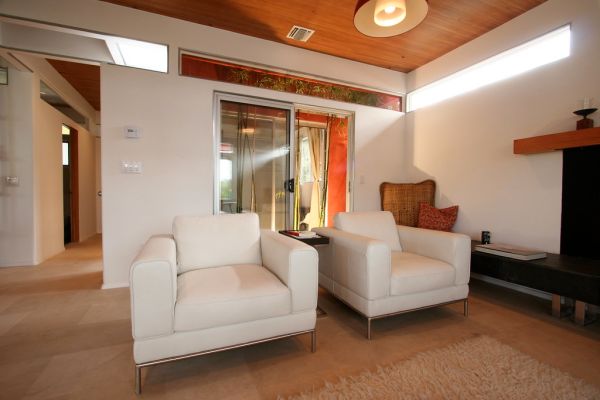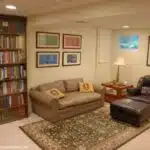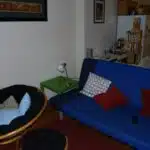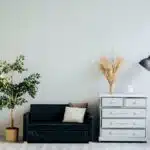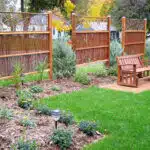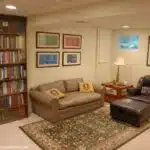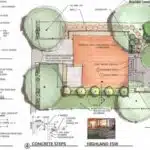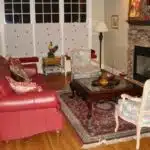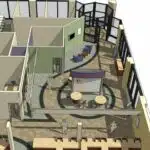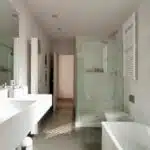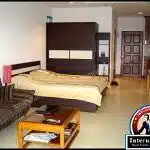Creating garden rooms is a beautiful way to add dimension and liveliness to the outdoor space. These unique spaces can help you create an oasis of tranquility, a place for entertainment or simply to enjoy nature’s beauty. Garden rooms are designed to be functional, practical and visually appealing, and they can be created with a range of materials that suit different styles and tastes.
As a garden room design expert, I understand the importance of creating spaces that reflect your style and serve your needs. Whether you are looking to create an outdoor kitchen, reading nook or meditation area, there are many things you need to consider before getting started. In this article, I will share some tips on how to create garden rooms that best suit your preferences while providing an inviting space for others to enjoy. From choosing the right location for your garden room to selecting plants that compliment the design, these tips will help you make the most out of your outdoor living area.
Assessing Your Outdoor Space
To create a successful garden room, it is essential to first assess your outdoor space. Start by measuring the area you have available, taking note of any obstacles such as trees or structures that cannot be moved. This will help you determine what type of garden room would work best in the space. It’s also important to analyze the terrain and consider any issues such as drainage or uneven ground that may affect the design.
Once you have a clear understanding of your outdoor space, you can begin to think about establishing a theme or style for your garden room. This can be based on personal preferences or the overall aesthetic of your home and neighborhood. Some popular styles include Zen gardens, Mediterranean-inspired spaces, and classic English gardens. Consider how you want to use the space and what types of plants and features will complement your desired style.
Ultimately, creating a garden room requires careful planning and consideration. By taking the time to measure your space and analyze the terrain, you’ll be able to make informed decisions about design elements such as layout and plant selection. With a clear vision in mind for your theme or style, you’ll be well on your way to creating an outdoor oasis that reflects your personal tastes while serving as a welcoming retreat for others.
Establishing A Theme Or Style
After assessing your outdoor space, the next step in creating a garden room is establishing a theme or style. One example of this is a Japanese-inspired garden room with clean lines, natural materials, and strategically placed water features. This theme emphasizes simplicity, serenity, and harmony with nature.
When choosing a theme or style for your garden room, it’s important to consider your personal preferences and the purpose of the space. Some popular garden room themes include cottage gardens, modern minimalist designs, and Mediterranean-style spaces. To get inspiration for your own design, you can look at books and magazines on garden design or visit other people’s garden rooms.
Once you’ve chosen a theme or style for your garden room, it’s time to start thinking about specific design elements that will bring that vision to life. A nested bullet point list can be helpful in organizing these ideas:
- Elements of the Design:
- Hardscaping: Consider using natural stone paths, patios, and walls.
- Softscaping: Choose plants that fit with the overall theme or style of the space.
By incorporating these elements into your design plan, you can create a cohesive and visually appealing outdoor area that serves as an extension of your home.
Transitioning into the subsequent section about defining the purpose of your garden room without using “step,” it’s important to have clarity on what you want to use this space for before finalizing any design decisions. Whether it’s a quiet retreat for reading and relaxation or an entertainment hub for hosting friends and family barbecues, defining the purpose will help guide all future decisions in creating your dream garden room.
Defining The Purpose Of Your Garden Room
Before creating a garden room, it is crucial to determine its purpose. Garden rooms can serve various functions, from providing a relaxing space to read and unwind to serving as an office or a gym. Defining your garden room’s purpose will help you make informed design decisions that cater to your needs.
One of the significant benefits of having a garden room is the flexibility it offers. You can customize your garden room to suit your preferences, whether you want it to be a space for entertaining guests or a secluded retreat for relaxation. Additionally, garden rooms can provide extra living space without the need for extensive renovations or pricey home additions.
When designing your garden room, several considerations come into play. The first consideration is the architectural style that best complements your home and garden. Another vital aspect is the materials used in construction, which should be able to withstand weather elements such as rain and wind. Adequate insulation and ventilation are also essential factors that should not be overlooked when designing your garden room. By taking these considerations into account during planning and design stages, you can ensure that your garden room meets all of your needs while still being aesthetically pleasing.
As you begin planning for your garden room’s purpose and design considerations, another crucial step is choosing the right location for it on your property. A suitable location will depend on several factors such as privacy, accessibility, and proximity to other structures on your property. By carefully considering all of these factors in combination with your desired purpose and design choices, you can create a beautiful and functional garden room that enhances both the beauty and functionality of your outdoor space.
Choosing The Right Location
Without the ideal location, your garden room will never reach its full potential. It is not enough to simply choose a spot that looks good or is easy to access. The perfect location must take into account various factors like the surrounding landscape, the orientation of the sun, and the intended use of the garden room.
Firstly, consider how your garden room will fit in with your existing landscaping. Will it blend seamlessly into the natural environment or provide a striking contrast? Also, think about how it will be viewed from different angles and perspectives. Ideally, you want it to look appealing from all sides and not just one particular direction.
Secondly, take note of how much sunlight your chosen location receives throughout the day. Depending on what you intend to use your garden room for, you may want more or less exposure to natural light. For example, if you plan on using it as a reading nook or office space during daytime hours, then having ample sunlight would be beneficial.
Lastly, landscaping tips should also be considered when determining the ideal location for your garden room. If there are trees or other plants nearby that could pose a threat to its foundation or structure over time, then these should be removed or relocated before construction begins.
In determining the size of your garden room, take into account both practical considerations like how many people will be using it at any given time as well as aesthetic considerations such as proportionality and symmetry with respect to surrounding structures and features in your outdoor space.
Determining The Size Of Your Garden Room
Determining the size of your garden room is a crucial step in the design process. The first thing to consider is how you plan to use the space. Will it be a cozy reading nook or a fully functional outdoor kitchen? Measuring techniques are important here, as accurate measurements will help you determine the optimal size for your garden room based on its intended usage.
Budget considerations also play a significant role in determining the size of your garden room. Larger spaces will require more materials and labor, which can quickly add up in cost. A smaller garden room may be more budget-friendly but could limit its functionality. It’s essential to strike a balance between size and budget to create a garden room that meets both your needs and financial constraints.
When determining the size of your garden room, it’s important not to overlook outdoor living trends. Many homeowners are now looking to create multifunctional outdoor spaces that blend seamlessly with their indoor living areas. To achieve this, consider incorporating features such as built-in seating or storage, which can maximize space without sacrificing comfort or convenience.
As you move into selecting materials for your garden room, keep in mind that they should complement both the intended use and size of the space. With proper planning and attention to detail, creating a functional and beautiful garden room is within reach for any homeowner.
Selecting Materials For Your Garden Room
When designing a garden room, selecting the right materials is essential. Not only should they look aesthetically pleasing, but they must also be functional and durable. Using recycled and sustainable materials for your garden room is an excellent way to reduce your carbon footprint while creating a beautiful space. Materials such as reclaimed wood, recycled bricks, and natural stone are not only environmentally friendly but can also add character and charm to your garden room.
Another crucial factor to consider when choosing materials for your garden room is the climate of your location. The materials used for a garden room in a warm climate will differ from those used in a colder one. For instance, if you live in an area with high rainfall, using waterproof materials like metal or plastic would be ideal as they prevent water damage. In contrast, areas that experience hot summers require materials that provide insulation to keep the interior cool.
In summary, selecting the right materials for your garden room requires careful consideration of factors such as sustainability and climate-appropriate choices. By using recycled or sustainable materials like natural stone or reclaimed wood, you can create an eco-friendly space that blends seamlessly with nature. Additionally, choosing weather-resistant or insulating materials specific to your location ensures that your garden room remains functional while providing comfort throughout the year. The next step in creating a beautiful garden room involves incorporating natural elements such as plants and water features – which we will explore in the following section.
Incorporating Natural Elements
When designing a garden room, the selection of plants is a crucial first step. Depending on the desired atmosphere, some plants may be more suitable than others. Hardscaping elements should also be arranged in a way that complements the chosen plants, incorporating paths, seating areas, and other features to create a cohesive and aesthetically pleasing space. Ultimately, by taking the time to carefully choose and arrange the elements, a beautiful and natural garden room can be created.
Choosing Plants
When it comes to creating garden rooms, incorporating natural elements is crucial. One of the most important considerations in this regard is choosing plants that will thrive in the space. Plant selection tips can help ensure that the right types of plants are chosen for each area of the garden room. For example, using plants that have similar moisture and sunlight requirements will make maintenance easier.
Common plant mistakes to avoid include choosing plants based on their aesthetics alone, without considering their suitability for the environment. It’s also important to consider factors such as soil type, pH levels, and drainage when selecting plants. In addition, it’s essential to choose plants that are appropriate for the climate in which they’ll be grown.
Incorporating natural elements into garden rooms can be an incredibly rewarding experience. By carefully selecting plants that are suited to the space and taking care to avoid common mistakes, garden designers can create beautiful spaces that not only look great but also provide a haven for wildlife and a peaceful retreat for people.
Arranging Hardscaping Elements
Incorporating hardscaping elements is another crucial aspect of designing garden rooms. Hardscaping refers to the design and installation of non-living features such as patios, walkways, walls, and water features. The proper arrangement of these elements can significantly enhance the aesthetic appeal and functionality of a garden room. Effective hardscaping design requires a balance between softscaping (plants) and hardscaping.
One essential landscaping technique for arranging hardscaping elements is to consider the flow of traffic within the space. For example, walkways should be designed to lead visitors through the garden room in a natural way. Similarly, seating areas should be placed in locations that offer privacy while still allowing for easy access to other parts of the garden room. Another important consideration is the use of materials that complement the surrounding environment.
When designing with hardscape elements, it’s also important to keep in mind their practical function. For instance, retaining walls can be used to create different levels within a garden room or address issues with soil erosion. Similarly, water features such as fountains or ponds can serve as focal points while also providing ambient sound and attracting wildlife. By carefully selecting and arranging these hardscaping elements, designers can create beautiful and functional spaces that are sure to delight both visitors and wildlife alike.
Adding Seating And Lighting
According to a survey conducted by the National Gardening Association, 77% of American households participate in some form of gardening. With this increasing trend, creating garden rooms has become a popular way to bring the beauty of nature into your home. Incorporating natural elements such as rocks, water features, and plant life is just the beginning. To create an atmosphere that is both inviting and functional, outdoor decor and seating must also be considered.
When it comes to outdoor decor, selecting pieces that blend in with nature’s beauty is key. Wrought iron furniture or wooden benches are classic choices that will never go out of style. However, don’t be afraid to mix in modern pieces such as metal sculptures or colorful throw pillows to add a unique touch. Plant arrangements can serve as decor as well. Consider incorporating hanging baskets or trellises filled with fragrant flowers or herbs.
In addition to outdoor decor, seating and lighting are essential components for creating a comfortable garden room. Choose seating options that provide ample space for guests to relax and enjoy the scenery while also being durable enough to withstand weather conditions. Lighting should not only illuminate pathways but also highlight specific areas such as water features or plant arrangements. Solar-powered lights are a great option for eco-conscious homeowners who want to save on energy costs while still adding ambiance to their garden room.
Considering Privacy And Security
When designing garden rooms, it is vital to consider privacy and security features. The ideal garden room should provide a comfortable space for relaxation and entertainment while ensuring that occupants have complete privacy. There are several ways to achieve this, including the installation of privacy screens, trellises, and fences around the perimeter of the garden room.
Privacy features can also be incorporated into the design of the garden room itself. For instance, you could install frosted or tinted glass windows or use blackout blinds to prevent prying eyes from peeking in. Additionally, incorporating vegetation such as hedges or climbing plants can create a natural barrier that provides both privacy and aesthetic appeal.
Security measures are also essential when creating a garden room. This includes installing sturdy locks on doors and windows, motion-sensing lighting around the perimeter of the garden room, and even security cameras for added peace of mind. By taking these measures, you can ensure that your garden room is a safe and secure space for you and your loved ones to enjoy.
Moving forward with your garden room design plans, it’s crucial to remember that privacy and security features must be top priorities. Integrating these elements into your design plan will help create an environment where you can relax without worrying about external distractions or potential security threats. In our next section, we will discuss adding water features to further enhance your garden room’s ambiance.
Integrating Water Features
- Incorporating ponds, fountains, and waterfalls can be an effective way to create garden rooms, as they add a sense of tranquility and beauty.
- Choosing the right materials for water features is essential, as they must be able to withstand changes in temperature and be durable enough to last.
- Ponds can be constructed from a wide range of materials, such as concrete, rubber liners, and even preformed shells.
- Fountains and waterfalls are often made of stone, metal, or even glass, depending on the desired aesthetic.
Incorporating Ponds
Incorporating ponds is an excellent way to add tranquility and aesthetic appeal to your garden room. Not only do they provide a serene atmosphere, but they also attract birds, butterflies, and other wildlife. However, before you begin construction, it’s crucial to consider the maintenance requirements of a pond. Ponds require regular cleaning and upkeep to prevent algae growth and ensure the health of fish and plants.
When designing your pond, there are several ideas to consider that can enhance its overall appearance. One idea is to incorporate rocks and boulders around the edges of the pond for a natural look. You could also add water lilies or lotus flowers for a pop of color and texture. Additionally, creating different levels within the pond with rocks or shelves allows for a variety of aquatic plants to grow.
To make maintaining your pond easier, consider incorporating features like skimmers or biological filters that help remove debris from the water. Another option is adding an aerator or fountain to keep the water circulating and prevent stagnation. By carefully planning your pond’s design and maintenance needs, you can enjoy this stunning water feature in your garden room for years to come.
Fountains And Waterfalls
In addition to ponds, fountains and waterfalls are other popular water features that can enhance the ambiance of your garden room. These features not only create a soothing sound but also act as a focal point for the space. Before installing a fountain or waterfall, it’s important to consider the design ideas and installation tips that will make them look their best.
When designing your fountain or waterfall, consider the style of your garden room and choose a feature that complements it. For example, a sleek modern fountain may work well in a contemporary garden room, while a natural-looking waterfall would be more appropriate for a rustic style. Additionally, incorporating rocks or plants around the base of the feature can help it blend into its surroundings.
Installation tips for fountains and waterfalls include ensuring proper plumbing and electrical connections are made to avoid leaks or electrical hazards. It’s also important to choose an appropriate size for your space, as too large of a feature can overpower a smaller garden room. Regular maintenance is crucial to keep these features functioning properly and looking their best.
Overall, incorporating fountains and waterfalls into your garden room design can add an element of tranquility and beauty to your outdoor space. By carefully considering design ideas and following installation tips, you can enjoy these stunning water features for years to come.
Selecting Plants To Compliment The Design
Did you know that plant pairing is a crucial aspect of garden room design? According to a recent survey conducted by the Royal Horticultural Society, 75% of gardeners believe that color coordination between plants is important for creating a cohesive and visually appealing space. As such, selecting the right plants to complement your garden room’s design is essential.
To ensure successful plant pairing, first consider the overall style of your garden room. Is it modern or traditional? Rustic or minimalist? This will help guide your selection of plants that will fit seamlessly into the space. Additionally, take note of the existing colors and textures in your garden room and choose plants that will enhance these elements.
Here are five tips for selecting plants that will complement your garden room’s design:
- Choose plants with similar growth habits for a harmonious look
- Use contrasting colors to create visual interest
- Incorporate texture with different leaf shapes and sizes
- Consider seasonal changes when selecting plants
- Experiment with planting in groups or patterns to create structure and depth
With these tips in mind, you can create a stunning garden room that is both functional and aesthetically pleasing. In the next section, we’ll discuss how to maintain your new outdoor oasis.
Maintaining Your Garden Room
Once your garden room is complete, it’s important to ensure that it stays in top condition. One way to do this is by choosing decor that is weather-resistant and easy to clean. Opt for furniture made from durable materials such as teak or wrought iron, and add outdoor cushions that can be removed and washed as needed. Additionally, consider incorporating plants into your decor that are low-maintenance and can withstand changes in temperature and humidity.
Seasonal maintenance is also crucial for keeping your garden room looking its best year-round. In the spring, be sure to clean up any debris left over from winter and prune any dead branches or leaves from surrounding trees or shrubs. During the summer months, keep an eye out for pests and diseases that may affect your plants, and water them regularly to prevent wilting. As fall approaches, prepare for cooler temperatures by covering any delicate plants with blankets or tarps, and remove any fallen leaves or debris before they accumulate.
| Choosing Decor | Seasonal Maintenance |
|---|---|
| Opt for weather-resistant materials | Clean up debris in spring |
| Choose low-maintenance plants | Keep an eye out for pests in summer |
| Add removable outdoor cushions | Prepare for cooler temps in fall |
Incorporating sustainable practices into your garden room design can also help reduce environmental impact while enhancing the space’s overall aesthetic appeal. Consider installing a rain barrel system to collect water runoff from your roof, which can then be used to water your plants instead of relying solely on municipal sources. Additionally, choose plant varieties that are native to your area, as they require less water and fertilizer than exotic species. By making these small changes, you’ll not only create a beautiful outdoor living space but also contribute to a healthier planet.
Incorporating Sustainable Practices
Recent studies have shown that the construction industry accounts for roughly 39% of global carbon emissions. This alarming statistic has prompted a shift towards eco-friendly materials and sustainable design principles, even in the realm of garden rooms. As a garden room design expert, I highly encourage incorporating sustainable practices into your garden room project to reduce your carbon footprint and promote environmental responsibility.
One way to incorporate sustainability into your garden room project is by using eco-friendly materials. Materials such as reclaimed wood, bamboo, and recycled plastic are all excellent options that not only reduce environmental impact but also add unique character to your space. Additionally, choosing durable materials will ensure longevity and minimize the need for replacement over time.
Another key aspect of sustainable garden design ideas is utilizing natural resources efficiently. Installing rainwater harvesting systems or composting toilets are great ways to minimize water usage and waste production. Incorporating native plants in your landscaping can also help conserve water while providing habitat for local wildlife. By implementing these practices, you can create a garden room that truly benefits both yourself and the environment.
When seeking inspiration from garden room designs, it’s important to keep in mind the importance of sustainable practices. By incorporating eco-friendly materials and utilizing natural resources efficiently, you can reduce your carbon footprint while creating a beautiful space that serves as an extension of your home. Keep reading to learn about other inspiring aspects of garden room design!
Seeking Inspiration From Garden Room Designs
Exploring aesthetics is an essential part of creating garden rooms. It’s important to consider the visual appeal of the garden room design, as well as how it will fit into the overall aesthetic of your outdoor space. Garden room designs can range from modern and minimalist to rustic and cozy, so taking inspiration from a variety of styles can help you find the perfect look for your garden.
Maximizing functionality is another crucial aspect of garden room design. Whether you’re planning to use your garden room as a workspace or relaxation area, it’s important to ensure that it meets your needs. Consider factors such as lighting, storage, and furniture placement when designing your garden room. Maximizing functionality will not only make the space more enjoyable to use but also increase its value and versatility over time.
When seeking inspiration for your garden room design, look for ideas that reflect your personal style and interests. You can start by browsing online galleries or visiting local home improvement stores to see what options are available. Additionally, attending gardening shows or consulting with a professional designer can provide valuable insights into current trends and best practices for bringing your garden room vision to life.
- Consider incorporating natural elements like plants or stone pathways into your garden room design.
- Experiment with different lighting options such as overhead fixtures or floor lamps.
- Incorporate unique features like built-in seating or a small fountain for added charm.
With these tips in mind, you’ll be well on your way to creating a functional and aesthetically pleasing garden room that perfectly suits your needs and personality. In the next section, we’ll explore some practical steps you can take to bring your vision for a beautiful outdoor living space to life.
Bringing Your Garden Room To Life
As the saying goes, “A garden is a thing of beauty and a job forever.” Once you have created your garden room, it’s time to bring it to life with DIY decor ideas that are both beautiful and budget-friendly. Whether you want to create a cozy reading nook or an outdoor dining area, there are plenty of ways to transform your garden room into a space that reflects your unique style.
One way to add some personality to your garden room is by incorporating DIY decor elements. For example, you could create a set of hanging lanterns using old mason jars and tea lights. Or, you could build a trellis out of wooden stakes and string for climbing plants like ivy or clematis. These touches will not only add visual interest but also provide additional functionality to your garden room.
If you’re looking for more budget-friendly ideas, consider repurposing items from around your home or upcycling secondhand finds. For instance, an old ladder can be transformed into a vertical herb garden or bookshelf. A vintage suitcase can serve as a charming planter for succulents or other small plants. By getting creative with what you already have or scouring thrift stores and garage sales for treasures, you can create a beautiful garden room without breaking the bank.
| Decor Element | Materials Needed | Estimated Cost |
|---|---|---|
| Hanging Lanterns | Mason jars, tea lights, wire | $10-20 |
| Wooden Trellis | Wooden stakes, string | $15-25 |
| Vertical Herb Garden | Old ladder, pots or containers | $20-30 |
| Vintage Suitcase Planter | Suitcase, potting soil, plants | $10-15 |
By following these tips and incorporating some DIY decor elements into your garden room design, you can create a space that is both inviting and personalized. With budget-friendly ideas like upcycling and repurposing, you can achieve your dream garden room without overspending. So why not get started on bringing your garden room to life today?
Conclusion
When it comes to creating garden rooms, there are several important factors to consider. Start by assessing your outdoor space and establishing a theme or style that you want to achieve. From there, define the purpose of your garden room and choose the right location based on factors such as sun exposure and privacy.
Once you’ve determined the size of your garden room, it’s important to maintain it properly and incorporate sustainable practices to minimize its impact on the environment. Seek inspiration from existing garden room designs and bring your own unique vision to life.
As a garden room design expert, I have seen firsthand how a well-designed outdoor space can transform a home and enhance overall well-being. By following these steps and incorporating your own personal touches, you can create a garden room that not only looks beautiful but also serves as a peaceful retreat for you and your loved ones to enjoy for years to come.
Image Credits
- “Living Room with Bamboo Garden” by Jeremy Levine Design (featured)

